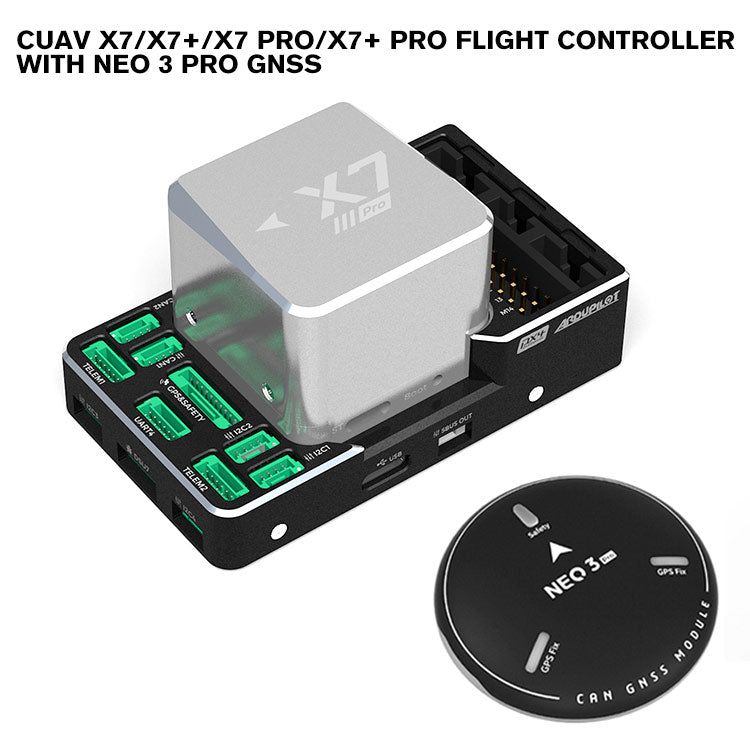Boost Drone Efficiency with SparkNavi Drone Flight Controller and GNSS/INS Made in Taiwan
Boost Drone Efficiency with SparkNavi Drone Flight Controller and GNSS/INS Made in Taiwan
Blog Article
Recognizing the Essential Functions and Features of a Drone Flight Controller for Optimal Airborne Efficiency
The flight controller serves as the pivotal element in a drone's architecture, orchestrating its activities and guaranteeing security through an advanced interaction of data and sensors processing. With improvements in innovation, the landscape of flight controllers is quickly advancing, prompting a better evaluation of what genuinely specifies optimal performance in this critical system.
Summary of Trip Controllers
When checking out the world of drone innovation, understanding trip controllers is vital for both enthusiasts and specialists alike. Trip controllers function as the brain of the drone, managing its activities and guaranteeing security during trip (SparkNavi drone flight controller and GNSS/INS made in taiwan). They refine information from various sensors, consisting of accelerometers, measures, and gyroscopes, to maintain balance and react to pilot inputs effectively
The design of trip controllers can vary substantially, varying from fundamental variations developed for entry-level drones to advanced systems equipped with innovative attributes for professional applications. The integration of GPS capacities enables precise navigating and positioning, while programmable firmware enables customers to personalize trip features to suit their certain requirements.
In addition, trip controllers are pivotal in facilitating interaction between the drone and the remote control, allowing real-time changes and telemetry data transmission. Comprehending the different kinds of trip controllers, including multi-rotor, fixed-wing, and hybrid systems, is vital for selecting the ideal model for a provided application. Eventually, an extensive understanding of flight controllers not just improves the flying experience however also takes full advantage of the efficiency and safety of drone procedures.
Key Functions of Trip Controllers
Trip controllers play an essential duty in managing a drone's flight dynamics by implementing a number of essential features that ensure stability and responsiveness. Among the primary functions is the stablizing of the drone's alignment and elevation. This is accomplished via the assimilation of various sensing units, consisting of measures, gyroscopes, and accelerometers, which continuously monitor the drone's position and movement.
.jpg)
An additional important feature is the processing of control inputs from the pilot or self-governing systems. The trip controller translates these inputs and changes the drone's electric motor speeds appropriately to accomplish the desired trip path. This consists of managing roll, yaw, and pitch, which are essential for maneuverability.
Furthermore, trip controllers are geared up with fail-safe systems. These features are created to respond to essential scenarios, such as reduced battery levels or loss of signal, by initiating predefined activities like returning to the launch factor or hovering in location.

Vital Attributes to Take Into Consideration
Numerous vital features need to be taken right into account when picking a drone trip controller to ensure ideal performance and reliability. One crucial aspect is the controller's handling power, which identifies its capability to take care of complex flight formulas and real-time information handling. A higher handling capacity improves responsiveness and security during trip.
One more crucial feature is the number of sustained flight settings. A functional flight controller must offer different modes, including acro, elevation hold, and GPS-assisted modes, dealing with different pilot skill levels and functional circumstances. Additionally, the visibility of built-in safety and security functions, such as try this web-site fail-safes and geofencing, can significantly boost operational safety.
Compatibility with various communication procedures is likewise vital, as click for info it ensures seamless combination with various other gadgets and peripherals, such as remote controllers and telemetry systems. Furthermore, the controller's firmware should be straightforward and on a regular basis upgraded to incorporate new functions and optimizations.
Integration With Sensors and Equipments
A trip controller's efficiency is greatly influenced by its ability to integrate with various sensing units and systems. This combination is essential as it makes it possible for the trip controller to obtain real-time data essential for efficient flight monitoring. Key sensing units consist of GPS, inertial dimension systems (IMUs), barometers, and magnetometers, each providing essential info relating to the drone's positioning, elevation, and position.

Furthermore, progressed trip controllers support assimilation with payload next systems, consisting of video cameras and various other sensing units, allowing boosted functionalities such as independent navigating and challenge avoidance. This interconnectedness not only enhances the drone's operational capacities however also increases its application possible throughout various markets, from aerial digital photography to agricultural tracking. Hence, a well-integrated flight controller is fundamental for attaining optimum aerial performance and making certain the reliability of drone operations.
Tips for Optimizing Performance
To make best use of the performance of your drone, a number of essential approaches can be employed that focus on optimizing both hardware and software program components. Make certain that the flight controller firmware is up to date.
Correct calibration decreases drift and boosts flight stability, especially throughout complex maneuvers. Premium props can reduce drag and rise trip time.
Adjust your flight settings, including PID (Symmetrical, Integral, Derivative) worths, to achieve smooth and receptive handling. By carrying out these approaches, drone drivers can dramatically enhance aerial performance, leading to a more effective and satisfying flying experience.
Verdict
In final thought, a detailed understanding of drone flight controllers is vital for boosting aerial efficiency. By focusing on these aspects, drivers can considerably boost the efficiency and integrity of their drone systems in varied applications.
Flight controllers offer as the mind of the drone, orchestrating its activities and making sure security during trip.Trip controllers play a crucial function in taking care of a drone's flight dynamics by implementing numerous crucial features that make certain stability and responsiveness. The trip controller analyzes these inputs and adjusts the drone's electric motor speeds as necessary to accomplish the wanted flight course.Many essential functions need to be taken into account when picking a drone trip controller to make sure optimal performance and integrity. Hence, a well-integrated trip controller is fundamental for attaining ideal airborne efficiency and ensuring the dependability of drone procedures.
Report this page